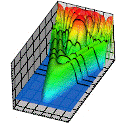Department of Physics and Astronomy: Publications and Other Research

Anthony F. Starace Publications
Document Type
Article
Date of this Version
March 1988
Abstract
While the use of hyperspherical coordinates to describe two-electron systems is quite old, it was Macek's introduction of a quasi-separable approximation in hyperspherical coordinates which made possible a host of theoretical studies elucidating the symmetries of doubly-excited states and the dynamics of processes involving two-electron atoms and ions. This work, up to about mid-1982, has been reviewed by Fano. However, much additional progress has been made since 1982, particularly on the symmetries of doubly excited electronic states, on the correspondences with molecular descriptions of two-electron systems, on the limitations of the quasi-separable approximation at small and at large distances, and on the hyperspherical descriptions of systems with an arbitrary number of electrons.
It is the purpose of this and the next three papers, then, to present an updated review of our current theoretical understanding of electron correlations. In this first paper we review the hyperspherical description of two electron systems, beginning with the quasi-separable approximation of Macek and its applications. We next discuss the concept of two electron motion along a potential ridge as the “pathway” by which two-electron states of high excitation are realized. The need for alternative representations of two-electron wave functions near the nucleus and at distances far from the nucleus is then analyzed. Finally, a number of extensions of the quasi-separable approximation in hyperspherical coordinates to other three-particle systems are mentioned.


Comments
Published in Fundamental Processes of Atomic Dynamics. Edited by J. S. Briggs, H. Kleinpoppen, and H. O. Lutz (Plenum Publishing Corporation, 1988). Copyright © 1988 Plenum Publishing Corporation. Used by permission.